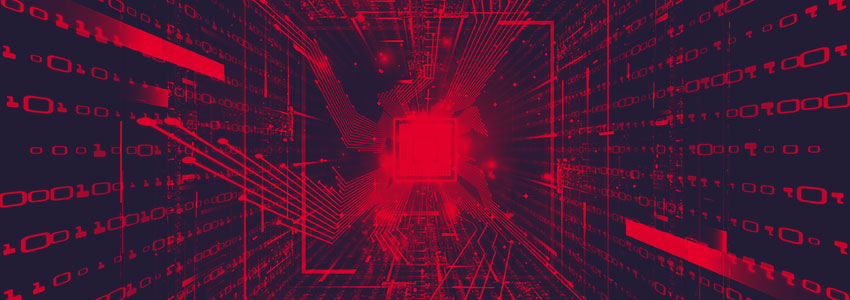HOW TO RESTORE Ransomware Data Recovery ENCRYPTED FILES




 (1 votes, average: 5.00 out of 5)
(1 votes, average: 5.00 out of 5)![]() Loading…
Loading…
Decrypting ransomware before was uncomplicated. Using the decryption tools cybersecurity companies developed, the ransomware encrypted files can be recovered. But hackers applying the cryptosystems most intelligence companies use, ransomware encrypted files have become almost undecryptable.
The cryptosystems are used by the intelligence companies such as NSA to protect their top secrets from getting stolen.

AES or Advanced Encryption Standard, divides the information into blocks. Each block consists of 128 bits, that goes through 10 rounds that is based on substitution
before the final key is generated. All the 128 bits get encrypted, making it impossible to crack.
RSA or Rivest, Shamir, & Adleman, uses mathematical algorithm to cipher a message. It involves public and private keys. The user defines the two prime integers, then
the key of the first message is raised to the power of the first number divided into the module. That’s how RSA works.
These advanced cryptosystems applied on Ransomware may warrant paying the ransom. However, if ransomware encrypted files on your computer, trying alternative
solutions is better than paying the ransom. The cybersecurity experts never recommend paying up the ransom because not all hackers provides the decryption key. Only
half of those who paid the ransom got their files back.
What alternative solutions can ransomware victims try?
Ransomware File Recovery
1. https://www.nomoreransom.org
Is a project collaborated by different Law enforcement and IT Security companies to help ransomware victims restore files and data without having to pay the ransom.
Only a few people know about https://www.nomoreransom.org. The website contains the decryption keys for the following types of ransomware.
AURORA
THANATOS
ANNABELLE
GANDCRAB (V1, V4 AND V5 VERSIONS)
LAMBDALOCKER
NEMUCODAES
MACRANSOM
JAFF
ENCRYPTILE
AMNESIA2
AMNESIA
MOLE
Once the ransomware that encrypts your files is identified by the extension, you can then download the correct decryption key.
2. Ransomware Data Recovery Software
Ransomware data recovery software are tools used to recover files and data deleted by viruses. They allow upto 2 GB data recovery. Varieties of files such as PDF,
doc, jpeg, mp4, mp3, and more can be recovered even after they’ve been deleted permanently. You can download ransomware data recovery software such as EaseUS, Disk
Drill, or Mini Tool. Download the file and follow the prompts on screen to finish the installation. Once the software is installed, it will start decrypting
ransomware encrypted files.
3. Ransomware File Recovery through Windows Backup
You may also restore files/ data from Windows backup.
- a. Click on the Start button.
- b. Go to settings.
- c. Select Update & Security.
- d. Click on Backup, then select Back up using the File History.
- e. Click on More Options.
- f. At the very bottom, click on Restore files from a current backup.
- g. Search for the file that you wish to restore.
- h. Click Ok and it will be restored to a location.
That’s another way to restore file encrypted by ransomware.
4. Ransomware Data Recovery through System Restore
You can also recover ransomware encrypted files or corrupted data through a system restore. However, the version of the file in the restore point will overwrite the
existing version. If you wish to continue;
- Click on Start.
- Go to Update & security, select Recovery.
- Click on Advanced Startup.
- Click on Troubleshoot → Advanced options → System Restore.
- Click Next, then choose a system point.
- Click Next and wait until the system restore is finish.
Check in the location of the file has been restored successfully.
Once the files and data are restored, keep your computer protected to prevent ransomware from infecting the computer again. Install an anti malware software with
advanced ransomware protection. Ransomware is stealthy and can easily infect a vulnerable personal computer.
In an organization, security software with advanced endpoint protection is ideal. The endpoint devices can serve as a point of entry of malware and a small breach is
enough for ransomware to hack the entire network. Protect the endpoint devices with security software with the best endpoint protection.
Xcitium Advanced Endpoint Protection
Xcitium Advanced Endpoint Protection provides the best protection for the network and endpoint devices. It consists of multi-layered defenses against varieties of
malware. It has Auto-Containment, a sandbox based technology based on Default Deny that contains untrusted files the moment they enter the computer. The virtual
container uses multiple recognizers that are trained to detect behavioral patterns instantly.
Xcitium Advanced Endpoint Protection also consists of a fileless malware
defense system that monitors and guards the registry against modification. It is also responsible for protecting the keyboard and hard drive against direct access.
With a packet filtering firewall that monitors the network traffic and data transmission, malicious activities are prevented.
Xcitium Advanced Endpoint Protection has been protecting 85 million endpoint devices worldwide and has contained 1,000,000,000 files with no report of infection. Download Xcitium Advanced Endpoint Protection now for complete ransomware
protection.
Please give us a star rating based on your experience.




 (1 votes, average: 5.00 out of 5)
(1 votes, average: 5.00 out of 5)